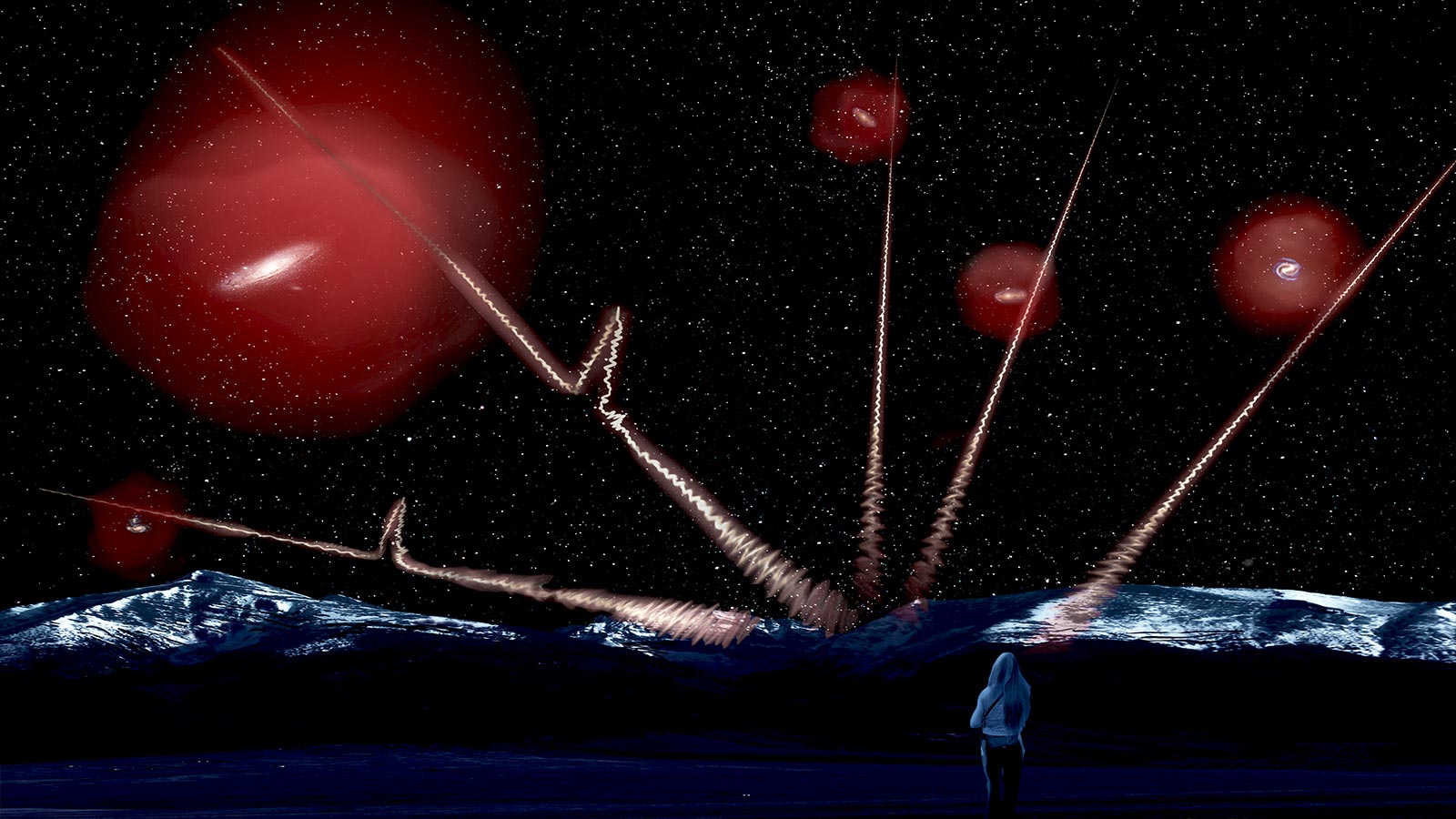
The radio bursts are depicted traveling from the distant cosmos, through the galactic halos, and finally reaching telescopes on Earth.
Powerful cosmic radio pulses originating deep in the universe can be used to study hidden pools of gas cocooning nearby galaxies, according to a new study that was published last month in the journal Nature Astronomy.So-called fast radio bursts, or FRBs, are pulses of radio waves that typically originate millions to billions of light-years away.As more and more FRBs roll in, scientists are now investigating how they can be used to study the gas that lies between us and the bursts.Specifically, they would like to use the FRBs to probe halos of diffuse gas that surround galaxies.
As the radio pulses travel toward Earth, the gas enveloping the galaxies is expected to slow the waves down and disperse the radio frequencies.
In the new study, the research team looked at a sample of 474 distant FRBs detected by CHIME, which has discovered the most FRBs to date.
“Our study shows that FRBs can act as skewers of all the matter between our radio telescopes and the source of the radio waves,” says lead author Liam Connor, the Tolman Postdoctoral Scholar Research Associate in Astronomy, who works with assistant professor of astronomy and study co-author, Vikram Ravi.“We have used fast radio bursts to shine a light through the halos of galaxies near the Milky Way and measure their hidden material,” Connor says.Keck Observatory called the Keck Cosmic Webb Imager (KCWI) that can probe the filaments of gas that stream into galaxies from the halos.
“As we discover more FRBs, our techniques can be applied to study individual halos of different sizes and in different environments, addressing the unsolved problem of how matter is distributed in the universe.”.
Caltech’s 110-dish Deep Synoptic Array, or DSA-110, has already detected several FRBs and identified their host galaxies.
Reference: “The observed impact of galaxy halo gas on fast radio bursts” by Liam Connor and Vikram Ravi, 4 July 2022, Nature Astronomy.